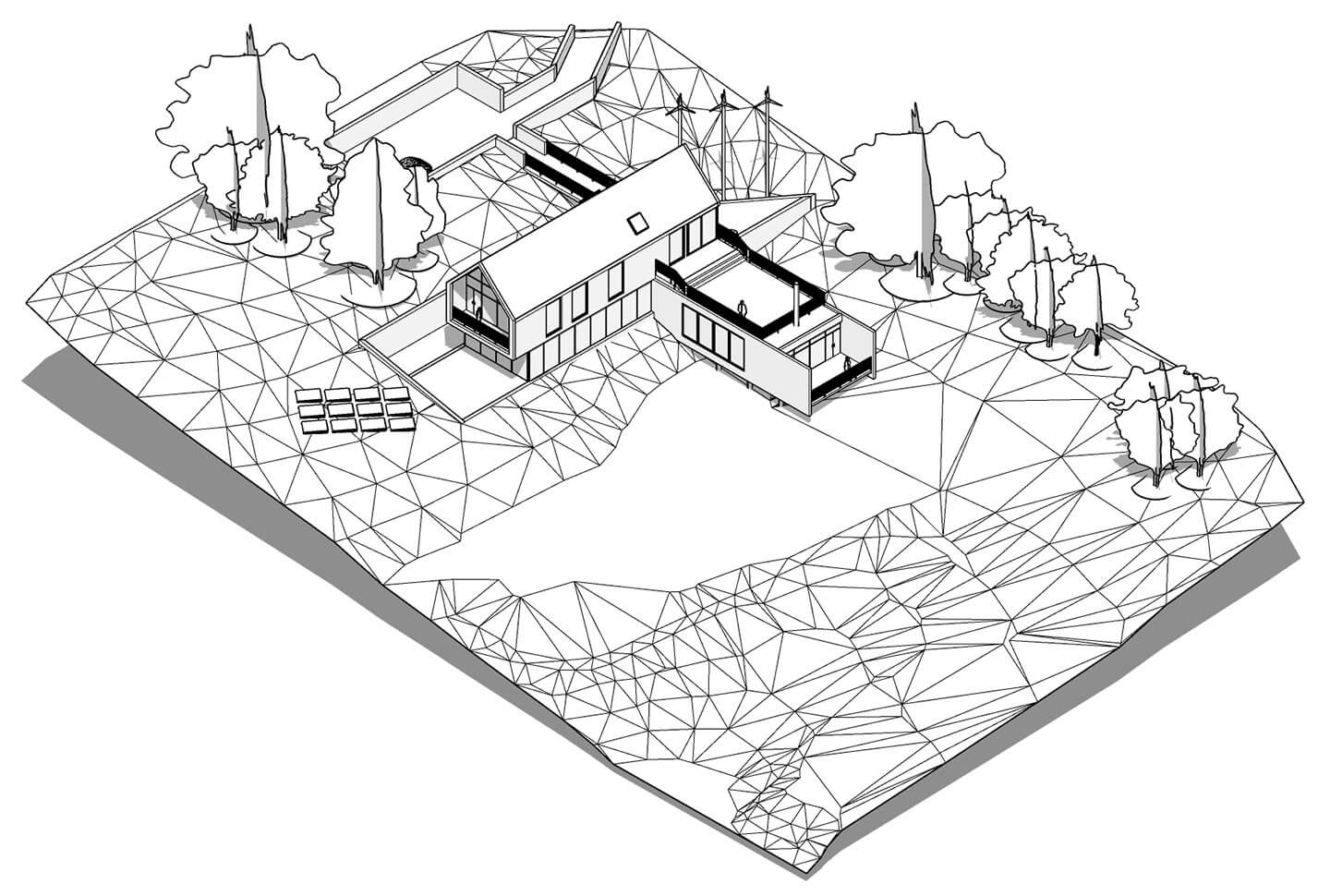

I think Autodesk really needs to try to implement more 'direct editing' into the Revit software. Revit is supposed to make the Cad part of the design easier, but it actually makes the whole workflow chaotic and unproductive.
IMPORT SKETCHUP TO REVIT HOW TO
Only a few people in the office know how to edit families properly.all the rest just paddles around with half ass'ed files. In our office, this results in people being unhappy using it as they need to focus 70% of their time on the tool, instead of being able to focus on the matter at hand, i.e the design. Not sure if a revit-export write a proper face-orieatation to the DWG format.Īs I am not a Autocad user (I was always happy to use Vectorworks previously), could you point out where I can find the 3D-Face-Blocks optimise command(s) in Autocad? Thanks.Īnd about Revit in general,I think the trouble with it is that the learning curve is just a bit too high. I had to optimize my 3D-Face-Blocks in autocad to look good in SU. So are the faces missing or does they look different, because you look on the default-color of a backside? It just seems that it can't be done from Sketchup.HPW wrote:One thing I observed on my DWG Imports, is that Sketchup does make a diffence between front and backside of 3D-faces. It can be done, because you can move a wall from Autodesk Architecture into Revit via IFC which imports as a native Revit wall. It's more of a coding problem defining the IFC file from Ruby than an Export / Import process. Whilst you can define what Revit needs from an IFC file to produce a Revit wall, it seems SU is unable to provide this information hence my original post. This is obviously time consuming, so a better solution would be for the walls to come in as native Revit objects with the inherent Revit functionality. so we have to trace over them to deliver Revit functionality. The external walls, internal walls, floors etc are. The problem is that the imported geometry is not parametric.

(It's not the generic IFC export from SU but one we have developed with better functionality). The tool we use is a Sketchup plugin called Quarter1 The model output from this is an IFC file which carries the building spaces, geometry and any associated data (room naming and numbering etc) and any classification. Once at concept design we transfer the concept model to Revit for detailed development. We use SU for spatial planning and concept design. I think the process you are describing is similar to our current process.
IMPORT SKETCHUP TO REVIT WINDOWS
IMPORT SKETCHUP TO REVIT UPDATE
It is here possible to import the SketchUp file with the consequence that changes made in SketchUp is not updated, but if you import the SketchUp model again.ĭo you use linking, update the SketchUp model in Revit with the "Manage Links" to reload.

The fact that you link the SketchUp model you can "drive" the form in Revit.Ĭhanging the shape of the existing object in SketchUp and update the SketchUp model in RevitĬan you draw the shape of the Revit objects with "Update to face" that is applied to the sketchup mass "By face". Positioning: Auto - Origin to Origin Place at: Level 1 or Ref. These are the recommended:Ĭolors: Preserve Layers: All Import Units: Auto-Detect, Select the SketchUp file you want to get into.ħ. In the "Link Cad formed" dialog, navigate to the folder with SketchUp file.Ħ.

Create an In-Place Mass in a Revit project, or create a family in the Family Editor.Ĥ. In Revit, Stand in the view level the model be set to.Ģ. We've come to the conclusion that to avoid possible errors by importing SketchUp model directly into Revit we do it like this: (Translated with Google so there might be some errors in the translation.)ġ.


 0 kommentar(er)
0 kommentar(er)
